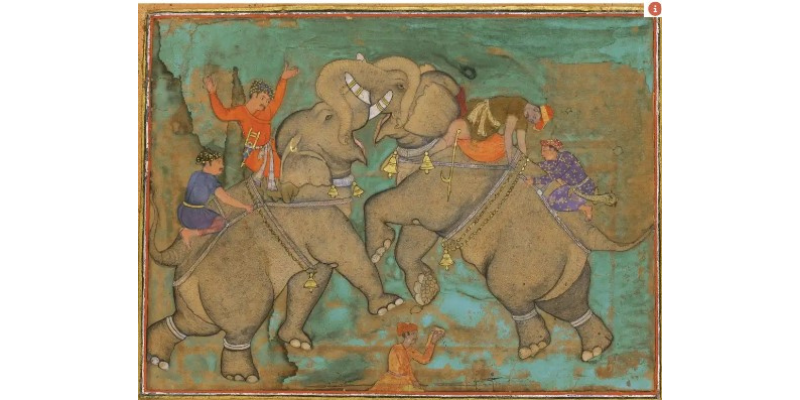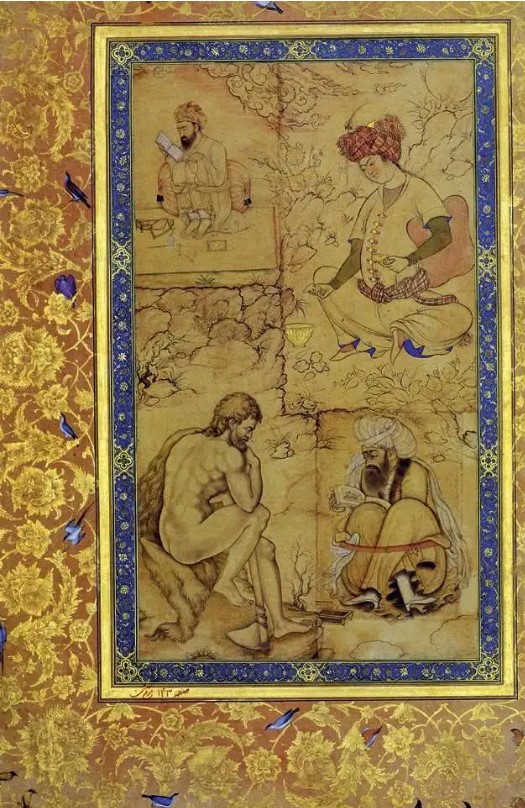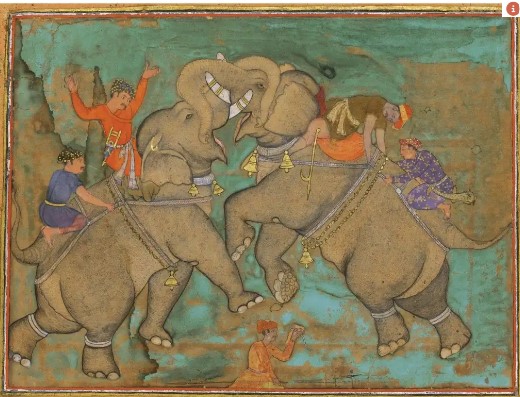Prachi Sahasrabudhe
The Mughal Empire’s imperial court, which was renowned for its rich cultural past, played a crucial role in the advancement of women artists. Despite societal norms that usually restricted women’s roles, Mughal women painters were strong figures who made significant contributions to art and culture. This article discusses the successes, issues, and long-term impact of women painters in the Mughal court citing some outstanding works by women painters in Mughal court.
Women painters held a unique role inside the royal courts throughout the Mughal Empire (1526-1857). The Mughals, who were well-known patrons of the arts, supported artistic manifestations like painting, poetry, and music. This setting allowed talented women to demonstrate their abilities and ingenuity. Mughal monarchs such as Akbar and Jahangir were instrumental in encouraging female artists. Because of Akbar’s liberal policies and interest in cultural variety, creative women like his sister Gulbadan Begum and foster sister Jahanara Begum flourished as patrons and artists. Jahangir expanded on this heritage by creating workshops, promoting female involvement, and selecting outstanding women as court painters.
The Mughal court provided a platform for female artists to showcase their talents, enriching the empire’s extensive artistic legacy. These women overcame cultural barriers to become successful artists and authors, leaving a rich artistic legacy. Their achievements continue to be appreciated and acknowledged, demonstrating the significant contribution that female painters made to the Mughal Empire.
Several Mughal miniatures from royal texts and albums depict professional women in the Zenana. A one-of-a-kind miniature of ‘A woman artist at Painting before a model’ from Jehangir’s atelier is, currently on display at the Bharat Kala Bhavan in Varanasi. It shows a female artist painting a portrait of another woman. This miniature demonstrates that women artists existed throughout Jehangir’s reign. Historians believe that women loved paintings just as much as men did, commissioned art, and even painted throughout the period of the Mughal Empire. Although there is evidence that art education was offered in the women’s quarters, there does not appear to be much information regarding the women artists and their work. As per the depictions in miniature paintings, Artists and art albums were commissioned by Akbar, Jahangir, Shah Jahan, and Dara Shikoh. The Muraqqa-e-Gulshan, created in the 17th century for Prince Salim, is regarded as one of the world’s greatest books of the time and contains works by at least three Mughal women artists. It was a precious possession because it was one of the jewels brought to Persia by Nadir Shah.
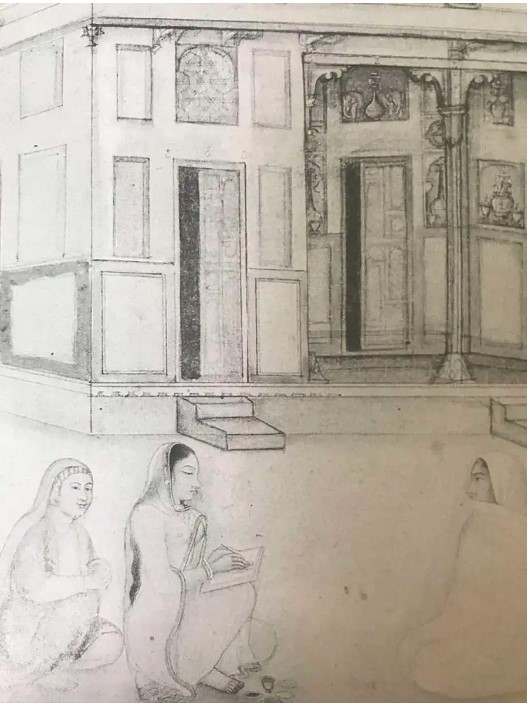 https://www.theheritagelab.in/
https://www.theheritagelab.in/
However, Mughal women artists excelled in a variety of creative fields, with painting being one of the most renowned. They created exquisite paintings for the royal courts that captured historical events, court life, and portraits. Women painters like Sahifa Banu and Ladli Begum made stunning miniatures showing themes from the royal court, mythology, and nature. Women poets in the Mughal court, such as Mah Laqa Bai Chanda and Zeb-un-Nisa, made major contributions to Urdu and Persian poetry. Their poetic sentiments frequently challenged established gender conventions as they addressed topics of love, spirituality, and socio-political challenges.
To understand the role of women artists in Mughal court paintings we must look at the works of a few important artists from the era. To start with, Sahifa Banu was unquestionably one of the most well-known female artists of the Mughal court, as at least three artworks ascribed to her have been discovered so far.
In the narrative, the son shows his extreme sadness by walking after his father’s coffin. A Sufi provides him with comfort, stating that his father’s anguish was far worse and that no one can prevent death. The action takes place outside the cemetery’s gate. The picture also depicts the following step, in which the corpse is transferred to the cemetery, and the last stage, which is represented by the bird soaring towards the white cage hanging from the tree (the bridge between two worlds), via which the soul must make its journey to heaven.
The composition of the artwork is like that of a 15th-century painting attributed to Sultan ‘Ali al-Mashhadi, which was a standard against which other works were judged. Sahifa Banu’s unique aesthetic choice and compositional sense had been the key highlight of her works.
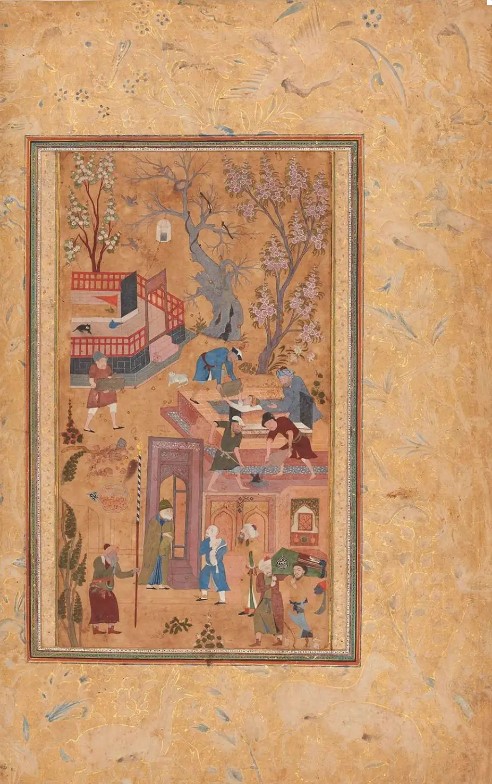 The son who mourned his father. Attributed to Sahifa Banu, early 17th century, Aga khan museum, https://www.theheritagelab.in/
The son who mourned his father. Attributed to Sahifa Banu, early 17th century, Aga khan museum, https://www.theheritagelab.in/
Ruqaya Banu, Nuri Nadira Bano & Nini were known to have made copies of European engravings and prints in their own style, possibly influenced by their art instructor. This could have been due to the influence of European masters.
Painting by Ruqaya Banu and Ahmad the Painter, early 17th century, Golestan Palace Library, Tehran, https://www.theheritagelab.in/
The nude figure appears in the Gulshan album, credited to Ruqaya Banu. It is part of a composite picture with sketches by ‘Ahmad the painter,’ implying the worth of her talent. A composite picture of St. Mathew with the lion credited to Nadira Banu is included in the Gulshan album. The Martyrdom of St. Cecelia is thought to be a copy of a Hieronymus Wierix etching. Many differences exist between the picture and the original, such as Nini’s decision to remove the wounds on the neck and Mika Natif’s description of it as “light and beauty radiate from the Mughal painting, with soft and peaceful facial expressions.”
The Martyrdom of St. Cecelia is thought to be a copy of a Hieronymus Wierix etching. Nini reduced the violence in the picture by removing the wounds on the neck. Mika Natif admired Mughal paintings for their brightness and elegance, as well as their delicate and tranquil facial expressions.
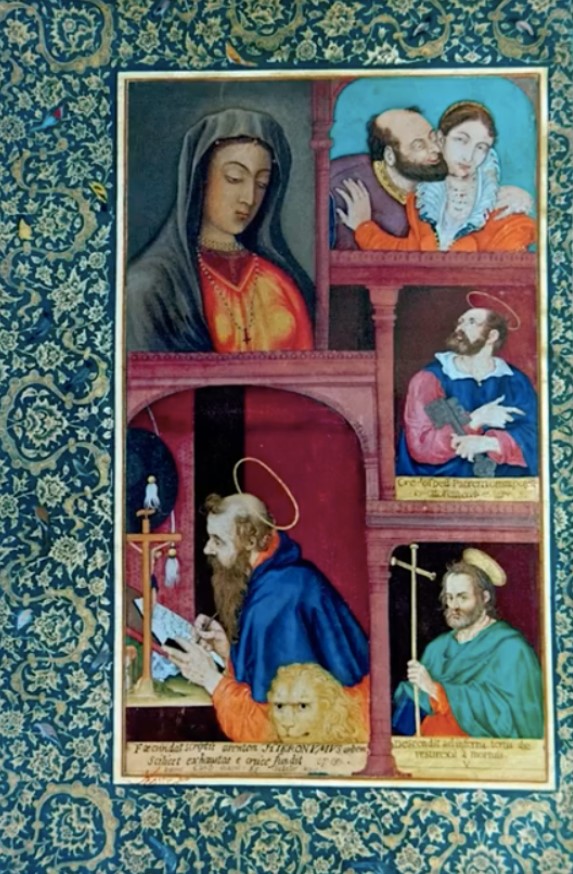 https://www.theheritagelab.in/
https://www.theheritagelab.in/
Amir Khusrau’s ghazal is written in calligraphy beneath the painting. The ghazal’s subject is desertion or the sorrow caused by love, as well as the anguish of the creative process. Saint’s neck wounds have been erased, implying that Nini was inspired by Cecelia, a lady who bravely faced death for her ideals and religion. The changes to the painting, as well as the incorporation of Khusrau’s poetry, take the picture out of its original Christian setting of martyrdom. Nonetheless, the image’s repurposing demonstrates how deeply Christian and European values infiltrated Mughal workshops throughout Akbar and Jahangir’s reigns.
The contributions made by female artists to the Mughal court had a profound impact on aesthetics. Their works served as cultural archives and shaped ideas about Mughal history and art. Their artistic legacy serves as inspiration for contemporary artists and stands as proof of women’s persistence and creativity in the face of adversity throughout history. 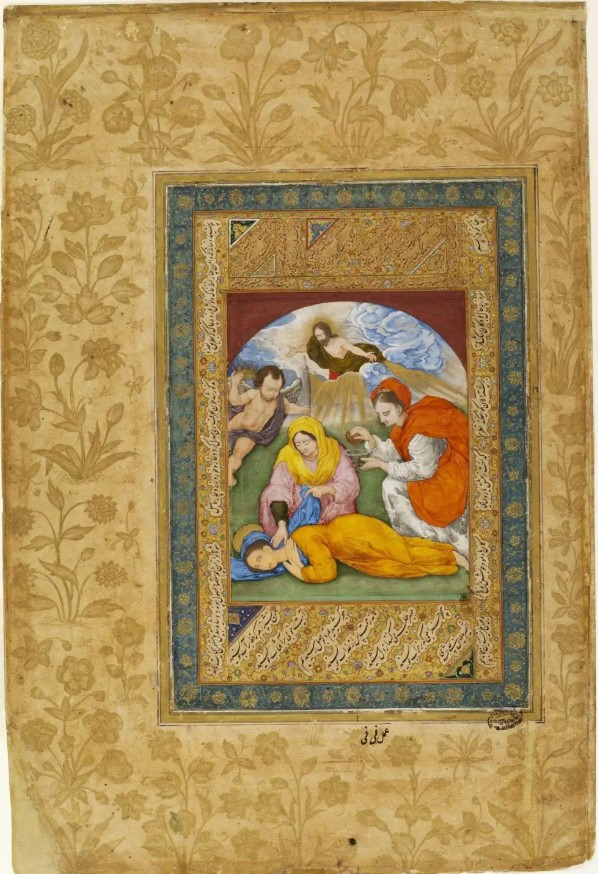 Saint Cecilia. By artist Nini, 17th century, https://www.theheritagelab.in/
Saint Cecilia. By artist Nini, 17th century, https://www.theheritagelab.in/
Elephant battles were a prominent form of court entertainment during the Mughal era. A struggle between elephants grew more animated here, as mahouts (elephant trainers) encouraged young elephants. Some people are also clinging to the ropes for dear life! This picture is credited to Khurshid Banu, however, there is little information available about the artist.
Elephants fighting. By artist Khurshid Banu. C.1600., Ashmolean,
https://www.theheritagelab.in/
On Mughal art and painters like Mansur, Basawan, Bishandas, and Abul Hasan, there is a wealth of knowledge available; however, the same cannot be said about women artists. Even though a few women artists were discussed in this essay, many more remain unknown. Over the years, historians and researchers have written about women with agency, those who constructed forts, tombs, and towns, and those who surrendered authority – but their interests in art and art commissions have been overlooked. Despite their successes, women painters in the Mughal court encountered several obstacles. Their limited mobility and social interactions as a result of societal restrictions created a relatively constrained creative environment. Additionally, women’s works were frequently misattributed to male creators or given less credit than those of males.
***
References:
- Majlis, N. K. (2006). “Representation of Professional and Working Women in Mughal Miniature Painting”, (16TH-18TH Century). Proceedings of the Indian History Congress, 67, 307–311. Http://www.jstor.org/stable/44147951
- “5 Women artists of the Mughal court’, The heritage lab, 2 March 2021,
- Https://www.theheritagelab.in/women-artists-mughal-court/


